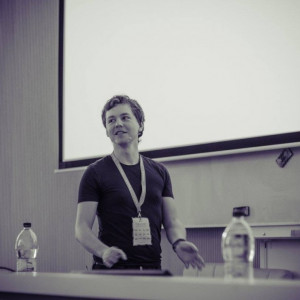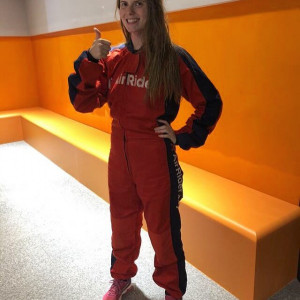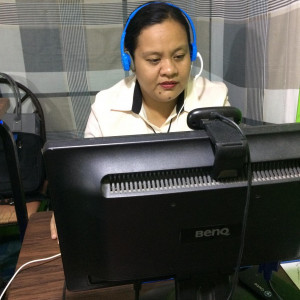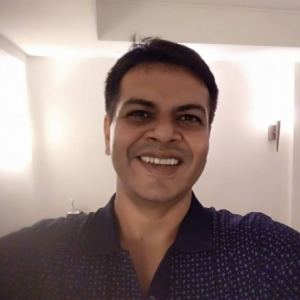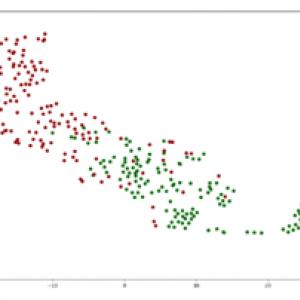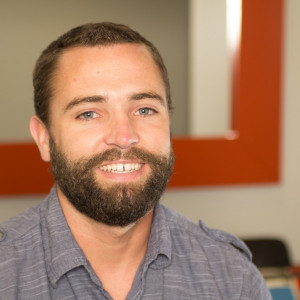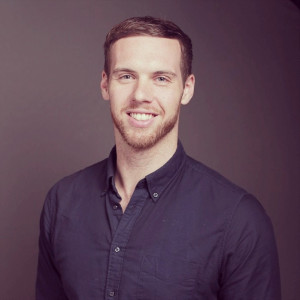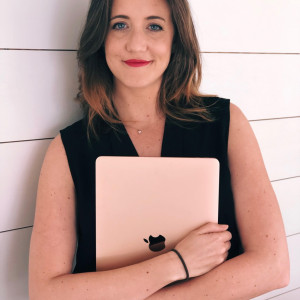How do you stay on task?
Interview with Igor Kulman, a software engineer building iOS apps remotely
Remote work requires strong will and a lot of discipline. I think it is not for everyone. I never had problems staying on task and always had a strong work ethic.
What really helps me working remotely is establishing a routine. Getting up at the same time every day, working the same hours and taking breaks.
Igor converted a part-time contract into a full-time remote software engineering job—learn how he did it and his tips for working remotely.
Read full interview from Interview with Igor Kulman, a software engineer building iOS apps remotely.
Interview with Hannah, a freelance writer that travels the world
As easy as it is to get off track, it can be difficult to get back on track. This is where it can be a good idea to make a nice list of priorities.
Feeling organized can do wonders to calm you down. The sooner you start to accomplish your tasks again, the better. Action is a lot better than overthinking. If you’re behind, you don’t want to dwell on that fact—it just wastes time. Accept it and move on.
The only way to get back on track is to jump back into work.
Hannah is a freelancer writer and social media manager that travels the world while working remotely. Read her interview to learn how she works.
Read full interview from Interview with Hannah, a freelance writer that travels the world.
Interview with Bennah, a remote ESL teacher that teaches kids English all over the world
Since the time I have committed with my home based job is from 5:30 pm onwards as of the moment, some of my tricks are turning on the computer and my cellphone as well, my QQ account is connected to my phone too, so if ever I am not in front of my computer I can still read the Admins messages.
Another tip is being patient with waiting for the students or with dealing with their attitudes since they are kids and they have different moods. Some are really grumpy during the class, and would shout whenever you ask questions, so really need to have patience in dealing with them.
Sometimes I am so stressed so I would definitely just get a deep breath and continue with what I am doing.
Bennah is an ESL (English as a Second Language) Teacher who teaches students from all around the world while working from home.
Read full interview from Interview with Bennah, a remote ESL teacher that teaches kids English all over the world.
Interview with Deb, a sales copywriter who transitioned from software development
Here are my top productivity tips and tricks:
- Go for a morning walk and do some freehand exercises at least 5 out of 7 days. Even if I wake up late, I make it a point to stick to this routine as it helps me feel fit and positive about myself, no matter how lousy the previous day was.
- Plan for the week ahead every Sunday night and try to stick to the plan. Even a rough plan helps keep me on track.
- Make it clear to my family and friends that I must not be disturbed when I am working unless it is a dire emergency.
- Turn off all social media notifications on my phone. When I have to meet a deadline, I put my phone in airplane mode.
- Work to music playing in the background. Here are some of my favourite tracks:
- To motivate myself:
- To focus on my work:
- Western classical by Bach, Strauss, or Mozart
- Other instrumental music mainly piano piece
- To jump out of the bed in the morning:
- Metallica, Megadeth, AC/DC
- To de-stress after an intense client session:
- US Top 40
- Top of the pops
- Take a nap in the afternoon. Since a typical work week is between 35 to 50 hours (depending upon project pressure), I make it a point to have an afternoon siesta for 45-60 mins. It helps me recharge my batteries during the day and plunge back into work 15 mins after waking up.
- Go for a short walk in the evening. Just before or after the sun sets, I step out of my house and take a stroll in a park nearby. This is different from my morning walks, which are typically high speed and intense. My evening walk is at a slower pace and I do it to relax.
- Try and schedule at least one day in a week to de-stress completely. When I am drowned in work, this typically does not happen, but even if I can’t make it one full day, I make it a point to block at least 5-6 hours of “me” time. I use this time to meet friends/family, catch up on a novel, go watch a movie. Anything to de-stress completely.
- Make it a point to take a 2-day break at least once in 2 months. There are some great guest houses and B&B’s in my city, so for a couple of days I go out with family for a break. I am not able to make it a leisure break all the time, so I either carry my wifi router or ensure that the guest house/B&B has a stable Wifi connection
- Take a 7-10 day vacation once every 5 or 6 months. What’s the point of freelancing if you can’t indulge your passions? Mine is traveling. I make it a point to go for a 7-10 day break at least twice a year. A confession – last week, I took 4 such breaks 😊)
Deb made the jump from full-time software developer to freelance sales copywriter—learn how he made the transition.
Read full interview from Interview with Deb, a sales copywriter who transitioned from software development.
Interview with Hanling, a data scientist that works remotely on machine learning
The most important thing is to keep in touch with the client.
We need to first figure out the goal the client want to achieve. Then during the working process, if we have any progress or have any problem difficult to solve, we'd better inform the client of it as soon as possible in stead of wasting a lot of time.
For improving productivity, I would suggest finding a silent place which makes you feel comfortable to work, and use a continuous period of time to tackle one hard problem in the work instead of using fragmented time.
Hanling started working remotely as a student and now does freelance machine learning and data analysis for clients all around the world.
Read full interview from Interview with Hanling, a data scientist that works remotely on machine learning.
Interview with Henry, a consultant who found remote work by saying No
My main tip as a remote employee or manager is to do less interaction than you think necessary.
When people start working from home, the instinct is to be more available and check-in more. It must be something about not being seen physically at your desk that makes people feel like they can't show how much effort they are putting in.
As a result, people will respond on Slack more quickly than when working in person, set up more check-in meetings over Zoom, and respond to emails right away and outside of work hours. This erodes the ability to do real, focused work without interruption.
It's important for managers of remote teams to encourage people to sign off and set limits on meetings.
Encourage people to pick small blocks of time to respond to email and close it otherwise. The more time you have without notifications and digital communication distractions, the more efficient you'll be.
Sometimes a "no" can lead to an exceptional opportunity. For Henry, that answer led to an ideal remote work career. In this interview, Henry shares his remote work tool stack, and essential tip for remote employees and managers.
Read full interview from Interview with Henry, a consultant who found remote work by saying No.
Interview with Stefan, a founder building a location-independent startup
I constantly refer to my calendar and my daily priorities.
Whenever I get off task or go down a social media rabbit hole, I check that list.
Stefan now has total control over his time since leaving the traditional office in early 2019. Hear how his routine is helping him build a solid remote startup.
Read full interview from Interview with Stefan, a founder building a location-independent startup .
Interview with Erin, a virtual assistant with a successful approach to freelancing
I've long stopped fighting myself when it comes to staying on task. Over the years, I noticed that I experience natural cycles of productivity.
There are some days that I feel more energetic and creative, and there are other days that I feel fatigued and bogged down by brain fog.
During the days or weeks that I feel unfocused, I tackle low-brainpower tasks like creating to-do lists. Then, I rest if I need to. When I'm once again feeling more focused, I tackle my to-do lists with lightning speed.
Erin has found freelancing success as a virtual assistant—see her organizational tips & insights into how she picks clients that suit her business.
Read full interview from Interview with Erin, a virtual assistant with a successful approach to freelancing.
Interview with John, a web developer who works from home
This is a great question. And I think it's something everybody struggles with from time to time, whether they work remotely or in an office.
For me, it goes back to the calendar. If I have the day mapped out ahead of time, I tend to stay on task a lot better.
When I don't have something scheduled for the day, I often get overwhelmed by the possibilities. I'll look at the blank slate and start thinking about the 1,000 projects or tasks that I keep saying I'll get to one day, but never really do.
Computer notifications are a big distraction for me. When it's time for me to be head-down on a task or project, it's key that I close any and all tabs that will make a sound or flash if something new comes in - email, Facebook, Twitter, et cetera. I'll set my status in Slack to "Do Not Disturb" and turn off notifications on my Mac.
Then, as the final step, I'll put on some low music. I have a playlist of 300 or so songs that I put on repeat. It's music that I know extremely well. I can't play new music because I find myself trying to "listen" to the music. The music for me needs to be like a soundtrack for my day. It's there in the background, but I'm just barely noticing it.
John is a web developer running a mini-agency inside a larger WordPress agency - learn how calendar management and establishing boundaries have helped him boost his productivity.
Read full interview from Interview with John, a web developer who works from home.
Interview with Haley, a VP of Operations shares her stellar remote work strategies
I put my phone away, go into full-screen mode whenever possible, and I try really hard to single-task instead of multi-task.
I work in blocks, 1-3 hours before getting my little dude ready and off to school, 6-7 hours during the regular business day, and 1-2 times/week deep work in the evenings.
Most days, I take very few breaks; I like to work very intensely, completely focused on work where possible. Parenting and teaching indoor cycling on the side are great forcing functions for a disciplined work routine; I can’t stay late at work to get stuff done later.
I really enjoy my work and try to be very conscious of whether or not what I’m doing at any given moment is actually the best use of time. I’ve slowly eliminated meetings where I’m not adding value.
Haley has figured out the way she works best as a VP of Operations. See her principles of remote work and the unique advice a former boss gave her about breaks.
Read full interview from Interview with Haley, a VP of Operations shares her stellar remote work strategies.
